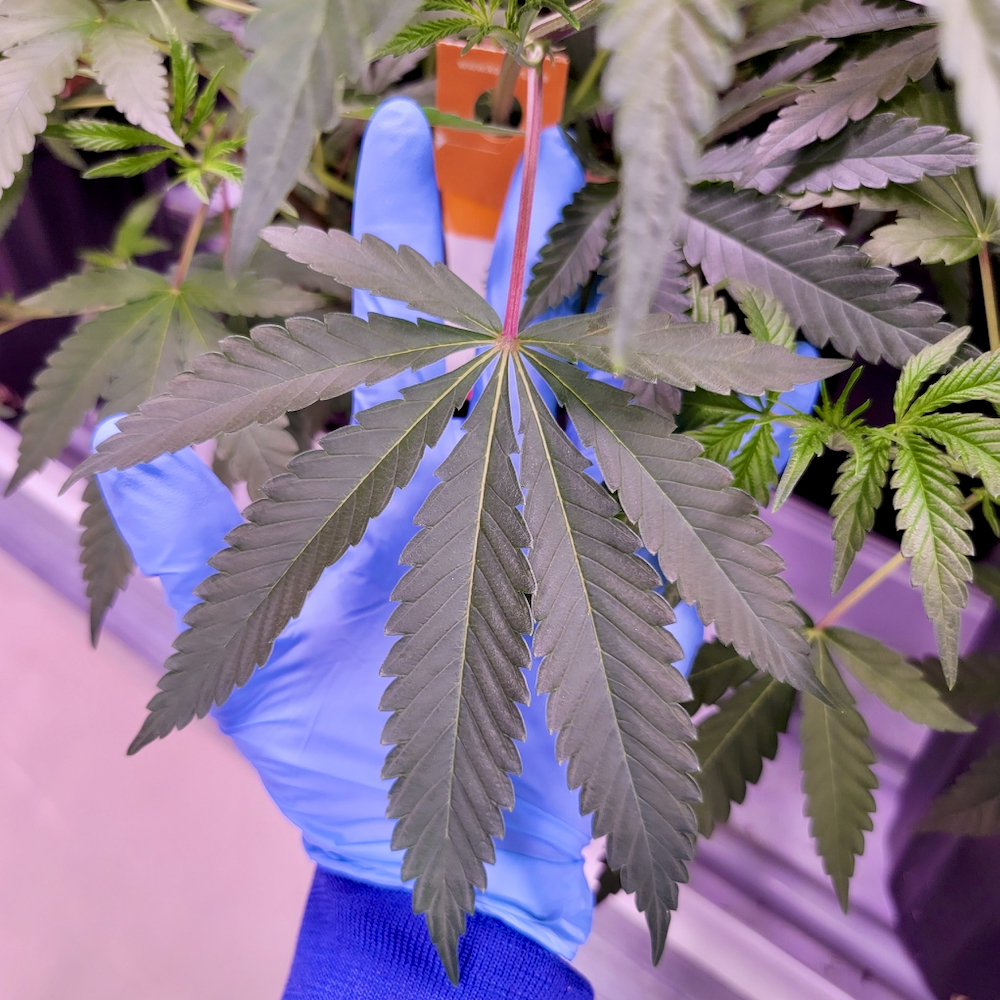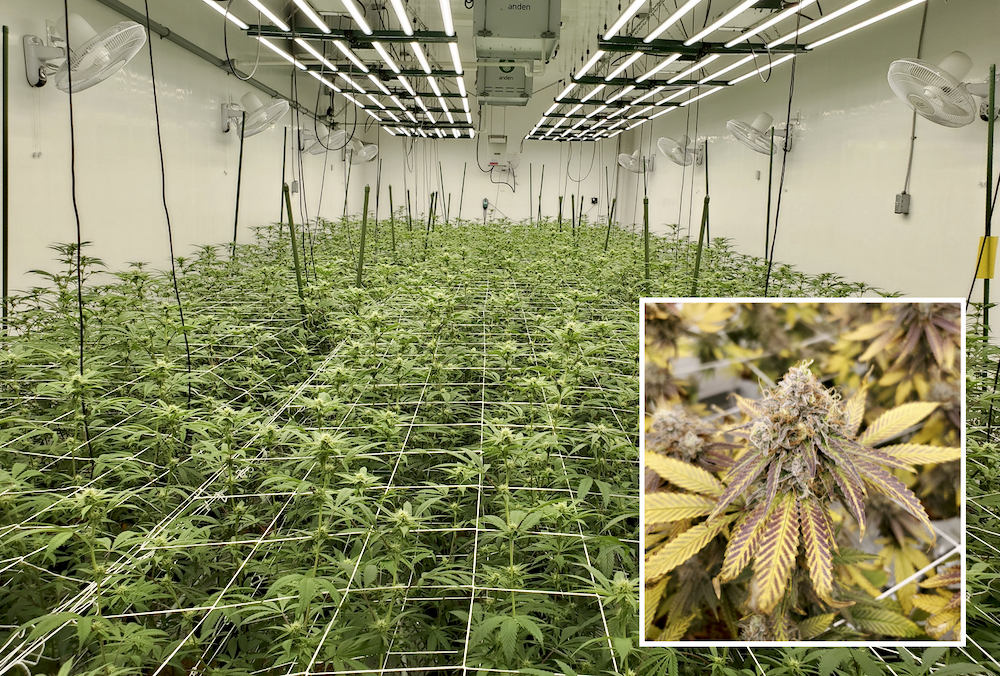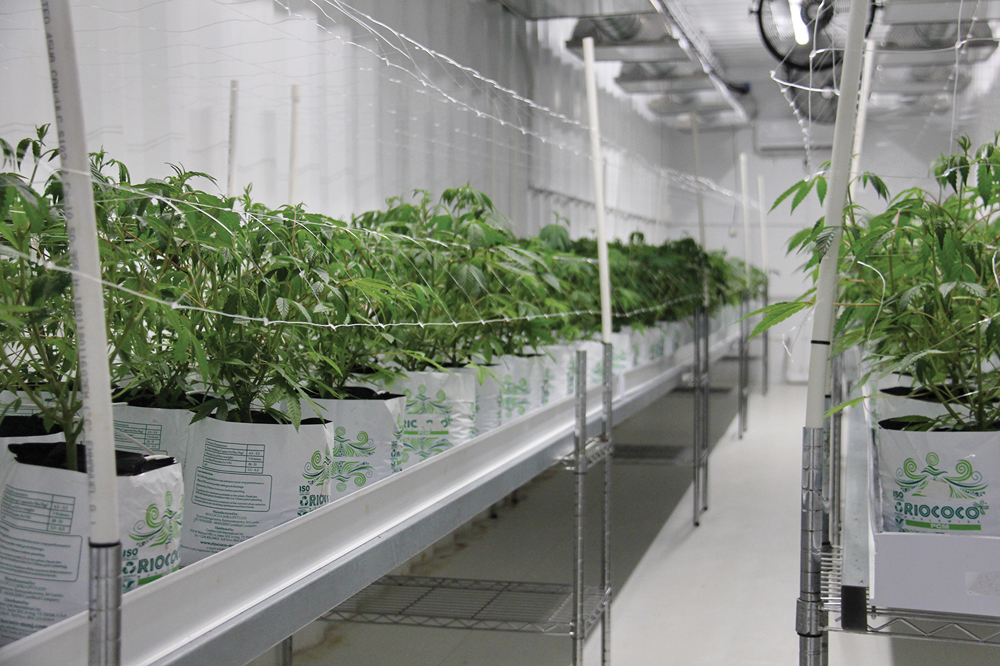Last year saw an increase in small ‘craft’ cannabis growers in Manitoba, expanding retail and growing sales even as wholesale prices struggled, say three producers.
“The market’s changing so rapidly that, you know, every day is an adventure,” said Dell Carritt, who co-owns grower and retailer Prairie Trichomes, which is based in western Manitoba.
Prairie Trichomes was one of a few companies to open a spate of new stores across Manitoba.
According to a City of Winnipeg report, there were 73 cannabis retail stores in Winnipeg at the end of October, up from 14 a year before.
Read Also

Mandatory holiday joy a valid struggle
Christmas may not be that jolly for everyone. Farm family coach Kalynn Spain suggests those struggling with over-the-top joy during the holidays instead aim for “fulfilled” or “content.”
After opening its flagship store in Neepawa in November 2020, Prairie Trichomes opened stores in Onanole, Brandon, Killarney and Gimli.
Large-scale grower Delta 9 opened seven stores across the Prairie provinces, said co-founder and CEO John Arbuthnot.
Why it matters: Cannabis production has been a new opportunity for the Manitoba agriculture sector.
The new outlets come as the market continues to increase. Statistics Canada data shows retail sales of cannabis increased quarter over quarter to just over $1 billion in the third quarter of 2021 from about $835 million in the last quarter of 2020.
Meanwhile, the price of cannabis continued to drop. Data from cannabis website Stratcann shows legal, brick-and-mortar store prices dropping steeply to an average of between $9 and $9.50 per gram in July 2021 from just over $11 per gram in late 2020.
Arbuthnot told the Co-operator it isn’t uncommon for cannabis to retail at $5 to $7 per gram.
When Prairie Trichomes opened its first store in late 2020, a one-ounce container of cannabis flower was about $165, said Carritt. It’s now about $85.
Arbuthnot chalked this up to overproduction. Early on in legalization, product was scarce and prices were high, he said. Aggressive oversupply has caused the bottom to drop out.
“The impact, then, down the chain on the wholesale side of the industry has placed a huge compression on margins and wholesale selling prices,” Arbuthnot said.
This has led to companies reducing production capacity or shuttering facilities altogether, he said.
Wholesale prices have stabilized somewhat, but Arbuthnot said he didn’t expect increases in the near term.
The positive, said Carritt, is that customers like this. “It’s more in line with the grey market now than it ever has been,” he said.

The rise of craft
Small, artisanal ‘micro-cultivators’ made inroads into the Manitoba market in 2021.
In late 2020, Manitoba added a handful of these smaller-scale operations to its list of licensed growers, adding to a small roster licensed earlier that year.
Canendo Cannabis is one of those small growers.
Andres Bazin, Canendo’s director of operations, explained that his family-run outfit is licensed to produce no more than 600 kg of cannabis a year, and does not use more than 200 square metres of growing space at a time.
This allows them to spend much more time per plant and dial in unique tastes and smoke properties, Bazin said.
“It’s all about the experience, it’s all about the quality that comes out,” he said.
However, craft growers face uphill battles in marketing their products. To sell, said Bazin, the products must meet provincial board requirements. This may include clearing a certain product amount threshold — e.g. enough to provide a case per store in Manitoba, Bazin said.
Some companies may require at least 20 to 30 kg of cannabis before they’ll buy the product. As a small grower, this may require blending multiple batches, which must first be initially grown and tested, then mixed, then tested again. This can add thousands of dollars in expenses, Bazin said.
It’s crucial that companies like Canendo work with sellers who know how to market their artisanal attributes, said Bazin.
Consumers will also need to learn about the difference between a value brand and a craft brand, particularly since craft may retail for double the price, said Bazin.
“A lot of people don’t understand that the way you grow it can be different, the same way most people don’t know what a homegrown tomato tastes like versus a store bought,” he said.
Bazin noted that awareness is growing. Ontario has added specific craft cannabis sections or designations in its provincial cannabis stores.
Looking ahead
Looking ahead, a next step in Canadian cannabis may be consolidation as companies look to build scale, Arbuthnot said.
“It stands to reason that over the coming years we will see the overall number of industry players consolidate and those companies become much larger and find efficiencies,” he said.
He noted Delta 9 plans to continue expanding its retail network.
Carritt said they also are looking to expand into new locations, and to introduce customers to new products. Prairie Trichomes is working toward acquiring a processing licence, Carritt added. It currently works with processing partners to fill its store shelves.
The federal Cannabis Act was due for review at the end of 2021 after three years of legalization, though the House of Commons won’t hear recommendations until early 2023.
Arbuthnot said he’s hoping excise taxes will take centre stage. Excise duties are applied either at a flat rate or as a percentage of the value of the cannabis products.
The duty rates were decided when the assumption was that the wholesale price of cannabis would be high, said Arbuthnot.
“A tax that was intended… to be a much smaller percentage of overall revenue has actually become, in some cases, 30 to 50 per cent of the wholesale selling price of cannabis,” he said. “It leaves very little margin for producers.”
Arbuthnot said these companies are really agricultural operations, and yet the government applied duties when the fledgling industry hadn’t proven it could be profitable.
While Delta 9 has done well, Arbuthnot said companies across the industry are struggling with profitability.
He added that nuances of labelling and packaging should also be revisited to find out what hasn’t worked and should be adjusted to help the industry thrive.
















